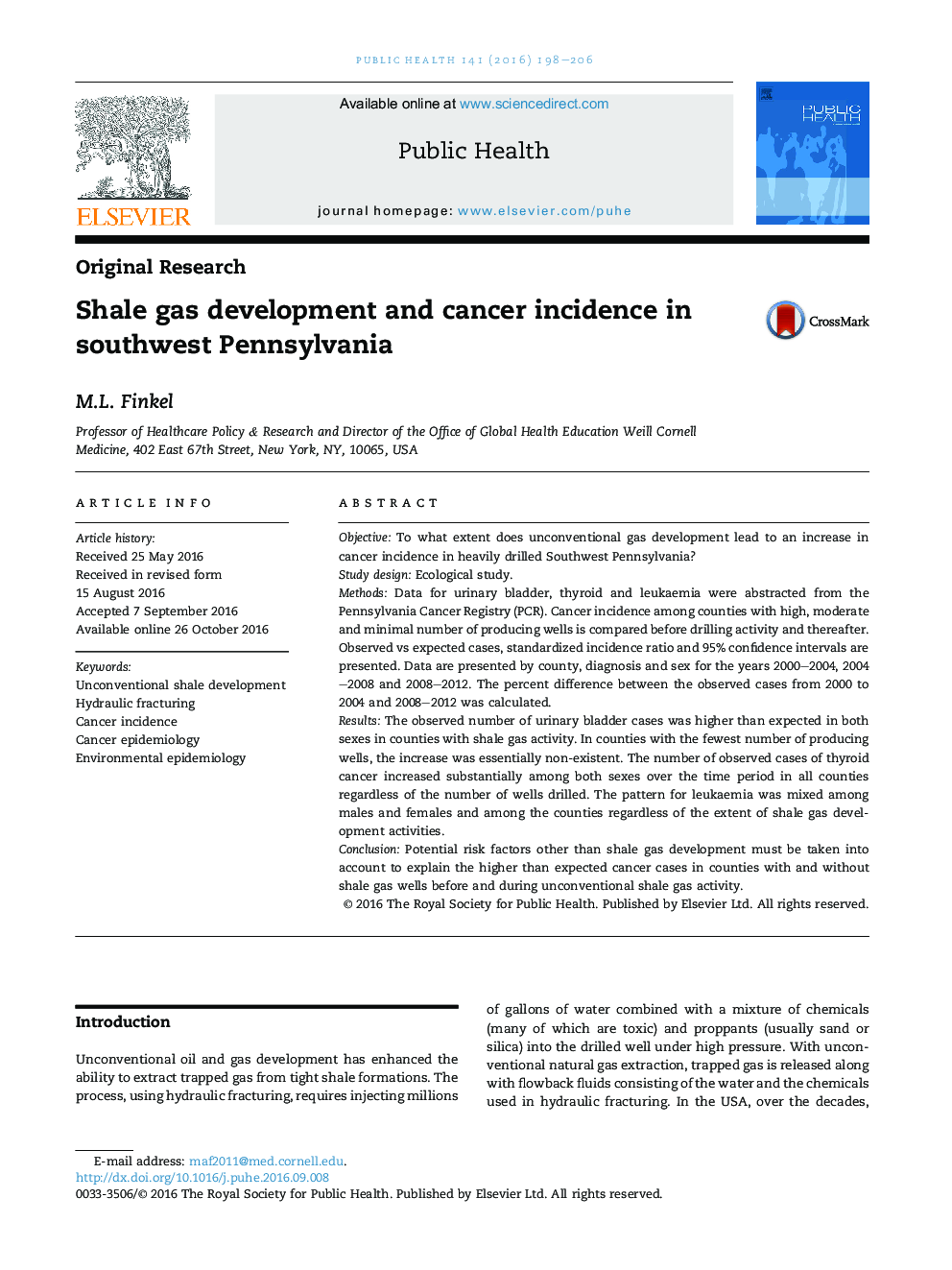| Article ID | Journal | Published Year | Pages | File Type |
|---|---|---|---|---|
| 5123090 | Public Health | 2016 | 9 Pages |
â¢More study is necessary to focus on the potential for harm to human health from unconventional shale gas development.â¢Many of the toxic chemicals used in the hydraulic fracturing process are known carcinogens.â¢Trends in cancer incidence in southwest Pennsylvania must take into account confounding factors.â¢Observed cancer incidence was higher than expected before UGD activity in counties regardless of UGD activity.â¢A synergistic effect of shale gas activities in a region with past toxic exposures should be investigated further.
ObjectiveTo what extent does unconventional gas development lead to an increase in cancer incidence in heavily drilled Southwest Pennsylvania?Study designEcological study.MethodsData for urinary bladder, thyroid and leukaemia were abstracted from the Pennsylvania Cancer Registry (PCR). Cancer incidence among counties with high, moderate and minimal number of producing wells is compared before drilling activity and thereafter. Observed vs expected cases, standardized incidence ratio and 95% confidence intervals are presented. Data are presented by county, diagnosis and sex for the years 2000-2004, 2004-2008 and 2008-2012. The percent difference between the observed cases from 2000 to 2004 and 2008-2012 was calculated.ResultsThe observed number of urinary bladder cases was higher than expected in both sexes in counties with shale gas activity. In counties with the fewest number of producing wells, the increase was essentially non-existent. The number of observed cases of thyroid cancer increased substantially among both sexes over the time period in all counties regardless of the number of wells drilled. The pattern for leukaemia was mixed among males and females and among the counties regardless of the extent of shale gas development activities.ConclusionPotential risk factors other than shale gas development must be taken into account to explain the higher than expected cancer cases in counties with and without shale gas wells before and during unconventional shale gas activity.
